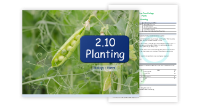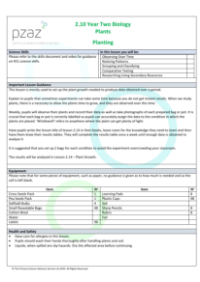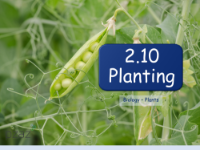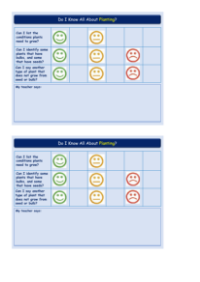Planting - Teacher Explanation

Science Resource Description
Welcome to Lesson 2.10 on 'Planting', a vital precursor to 'Plant Growth' in Lesson 2.14 within the Year 2 'Plants' Unit. This lesson serves as a practical setup, with a primary focus on health and safety considerations when handling plant materials and soil. It is crucial to be mindful of potential plant allergies and to ensure that pupils thoroughly wash their hands post-activity. During this lesson, pupils will embark on an investigative journey to discover the necessary conditions for seeds and bulbs to germinate. Required materials include cotton wool, a selection of seasonal bulbs (such as daffodil bulbs), resealable sandwich bags, a marker, and water. The lesson plan will guide the pupils through setting up the experiment, which will explore the effects of different environmental conditions on germination.
Students will delve into an experimental investigation to determine the ideal conditions for seed and bulb germination by examining variables such as wetness, dryness, heat, and cold. For example, pupils will place a sunflower seed onto damp or dry cotton wool inside a labelled sandwich bag, which will either be placed on a windowsill or in a freezer to observe the effects of these conditions. This experiment aims to demonstrate that seeds require dampness and warmth to initiate growth, as they contain the necessary food stores to support the plant until it can synthesize its own food through developed leaves. In a subsequent task, pupils will compare seed and bulb growth by planting them in soil and monitoring factors such as leaf number and stem length over several weeks, with results to be analyzed in Lesson 2.14. The lesson is designed to be flexible, allowing adjustments based on class size and resources, while ensuring that pupils engage in hands-on learning about the conditions required for plant growth.





